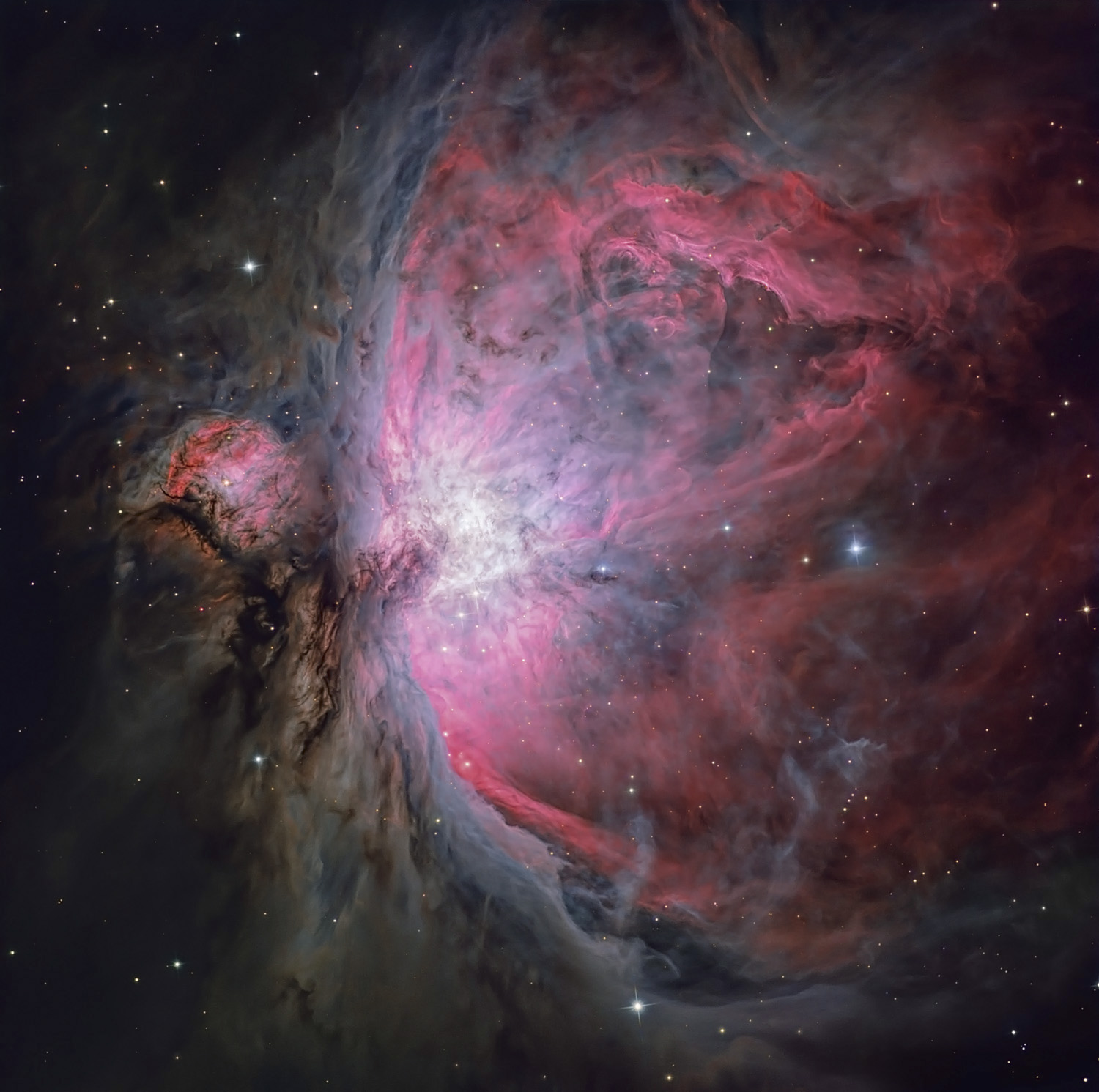
The Falls of Orion (M42)

Located some 1340 light years away, the Orion Nebula
is the nearest, large star forming region, to our Earth.
If you consider the earth-sun diatance as an inch (a delightful non-metric
measure that is, near enough, the same length an adult human thumb's last joint to its tip.
Then a light year is 63,000 inches or a statute mile. (1.6 kilometres)
So if the Sun's distance was as far as your thumb's knuckle to its tip, then Orion,
for Sydney residents (where this image was taken)
would be at a similar distance to Townsville, Queensland.
Orion consists of neutral clouds of gas and dust,
stellar associations, ionized gas, and reflection nebulae.
It also has active star forming regions where gravity
compresses and heats matter to the extremes that permit
nuclear fusion required to light-up newly formed stars.
The gas and dust looks to be "falling" in a manner similar to
a terrestial waterfall, but in this case the flow is not downhill,
but inwards toward the searing core of the nebula containg
the Trapesium and many other nascent stars.
Image captured 7-9th December 2018 using:
Alluna Optics RC16 + Alluna AFC
SBIG STX16803, SBIG FW5-STX (CCDops Self guide mode)
Software Bisque Paramount PMEII
Processed with MaxImCCD, Pixinsight, Photoshop CC2018
Copyright Peter J Ward 2018, 2019

Can you see all 26 grey scales above?